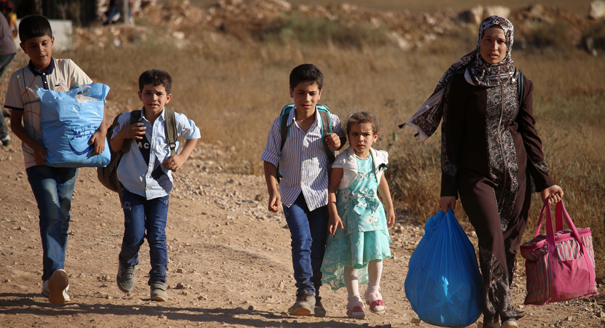In a recent interview on Al-Ghad TV’s program “Al-Qarar,” Syrian pro-regime actor Bassem Yakhour ignited a heated debate with his scathing criticism of the rising number of Syrian refugees, particularly targeting their increasing birth rates. “A refugee lives in another country, lacking even the basic necessities of life, yet they bring sixteen children into the world,” Yakhour remarked, sparking a wave of both support and opposition.
This controversy has once again brought to the forefront the complex and deeply rooted issues surrounding Syrian refugees—a topic that demands a closer examination. Amid the social, economic, and psychological hardships they face, several pressing questions arise. What drives these high birth rates among Syrian refugees? How do their dire economic circumstances influence decisions to expand their families? And what long-term effects might this phenomenon have on both the refugees and their host communities?
Childbearing has long been integral to Syrian culture, steeped in customs and traditions where the extended family represents strength and social cohesion. The larger the family, the more it embodies resilience and mutual support. However, displacement has forced many Syrian families to grapple with the preservation of this cultural identity. The urge to increase their family size has become, for some, a defiant assertion of their existence in the face of the displacement that has stripped them of their homeland.
This psychological response is compounded by feelings of insecurity and instability. For many, the uncertainty of the future has led to a form of social and psychological defence: increasing their numbers as a beacon of hope for better days. The belief that a larger family offers a better chance to withstand challenges and alleviate the isolation of exile is prevalent among many Syrians.
Economic hardship has further fueled this trend. Some displaced families rely on humanitarian aid from international organizations, which often base assistance on family size. This has led to a perception among some refugees that the economic burden of having more children is mitigated by the financial support they receive, allowing them to sidestep the immediate consequences of family expansion.
However, this strategy comes with significant risks. The deteriorating economic situation is often accompanied by a decline in health and educational awareness. Many Syrian families are unaware of the long-term implications of unchecked population growth, including the health risks to mothers and children who suffer from inadequate medical care and malnutrition.
Moreover, the high birth rates are also a response to profound emotional wounds. Many families have lost loved ones—sons, brothers, and parents—during the war and their subsequent displacement. For these families, having more children is a way to fill the emotional void left by those who have passed. Each new child symbolizes hope, a fresh start, and a way to push back against the grief of the past.
This reproductive behaviour is also an attempt to recreate the family nucleus that has been shattered by displacement. As Syrians find themselves scattered across various countries, the birth of new children is seen as a way to rebuild the family unit, compensating for the loss of those left behind. For many, expanding their family is a means of coping with the disintegration of their traditional support systems.
Yet, these high birth rates come with significant challenges—not only for the refugees themselves but also for the host communities. The strain on infrastructure, including health, education, and housing, is considerable. Host communities often struggle to accommodate the growing population, leading to tensions between refugees and local residents who see the increase as unjustified and burdensome. This has created a widening gap between the displaced Syrians and the communities they live in, exacerbating the already complex relationship between the two groups.
As Syrians continue to navigate the challenges of displacement, the phenomenon of rising birth rates remains a contentious issue—one that reflects the deep-seated fears, hopes, and cultural imperatives of a people striving to survive in the face of overwhelming adversity.
This article was translated and edited by The Syrian Observer. The Syrian Observer has not verified the content of this story. Responsibility for the information and views set out in this article lies entirely with the author.


